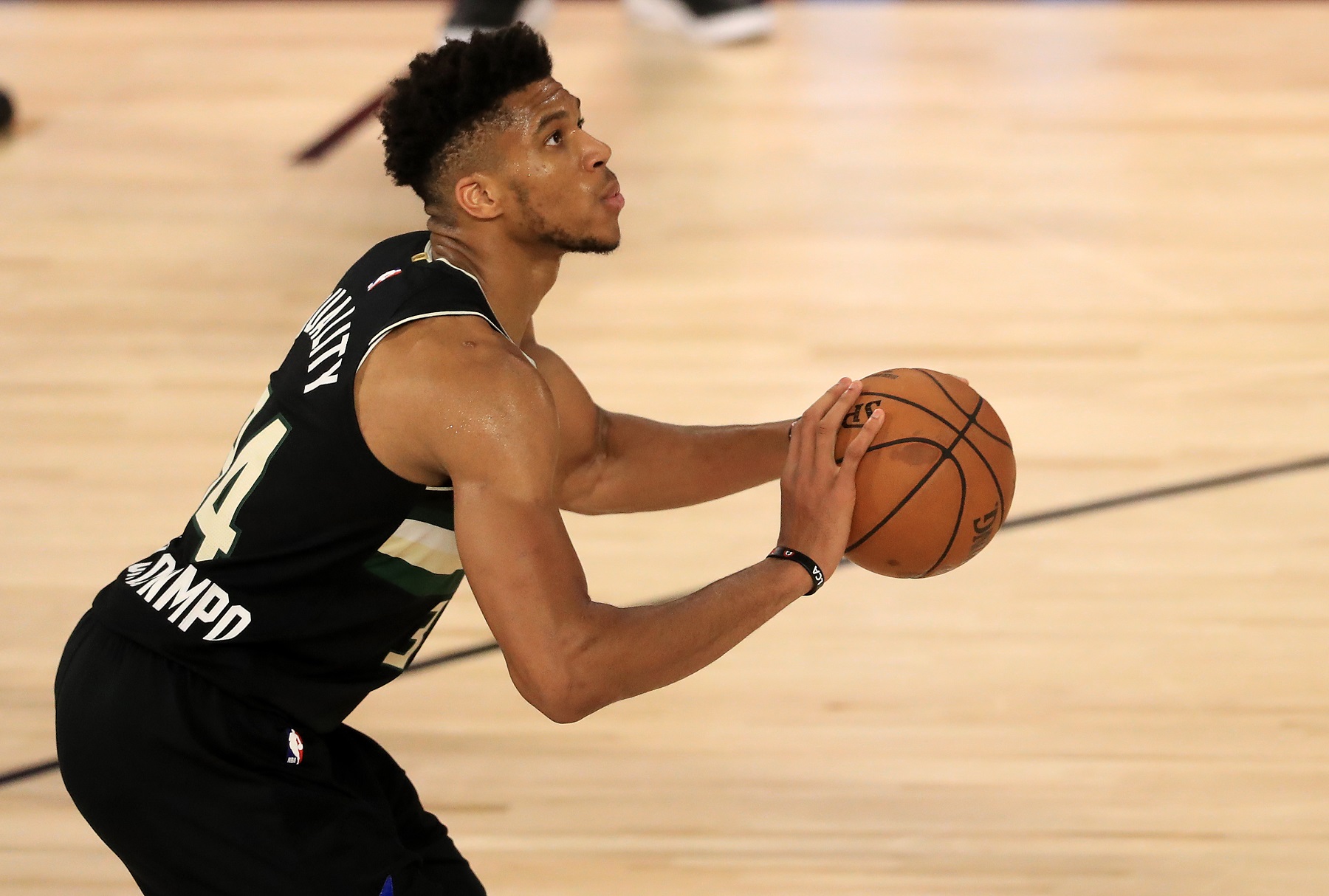NBA
Milwaukee Feared a Different Disaster if Giannis Antetokounmpo Left the Bucks

Mike Trout gets $436.5 million to play baseball for the Los Angeles Angels, Patrick Mahomes lands $503 million to play football for the Kansas City Chiefs, and Giannis Antetokounmpo scores $228.2 million from the NBA’s Milwaukee Bucks.
How can teams afford those contracts, aside from great TV contracts? In the case of the Bucks, they couldn’t afford not to pay the Greek Freak. In the days since Antetokounmpo accepted his supermax contract, it’s become apparent how much the four-time all-star means to the financial future of the Bucks and to the city.
Giannis Antetokounmpo has excited Milwaukee Bucks fans
RELATED: Giannis Antetokounmpo Had One Star on His Wishlist to Secure His Stay in Milwaukee
Giannis Antetokounmpo’s new $228.2 contract hasn’t kicked in yet. He’ll make $27.5 million this season before the new deal starts at $39.3 million next year. However, the dividends have started kicking in for the Bucks.
According to CNBC, the Bucks pulled in 1.3 million video views on social media channels and a 186% increase in online merchandise orders in the first 18 hours after Antetokounmpo revealed on Twitter that he accepted the supermax contract. The team reported 55% of the merchandise was specific to their 6-foot-11 star.
On top of that, the Bucks are back in position to maximize a fairly new revenue stream. The NBA became the first major U.S. sport to allow teams to add a uniform patch with advertising on it in 2017. Milwaukee’s deal with Harley-Davidson for that piece of uniform real estate expired at the end of last season.
Once the Bucks secured Antetokounmpo through 2026, interest picked up quickly. They stand to bank $10 million a year or more from a deal that should be finalized shortly.
“The feeling I got was, people would rather pay the premium knowing Giannis was locked in than take the chance with us in case he doesn’t re-sign,” said Matt Pazaras, the Bucks’ chief business development and strategy officer.
The city of Milwaukee wins when the Bucks do
When the Milwaukee Bucks win, so does the city’s economy. With a population of about 600,000, Milwaukee qualifies as a mid-sized city by most measures but is smallish by NBA standards. Still, seven Fortune 500 companies are headquartered there, which creates a sound sponsorship base. That may sell the luxury suites, but winning is what keeps the stands filled with average fans.
VISIT Milwaukee estimates a single playoff game at Fiserv Forum when there isn’t a pandemic generates $3 million in economic impact to the downtown area and fills hotels. That keeps people employed and sales-tax revenue flowing.
“Having a superstar in your own backyard is going to draw other players to your team and that’s going to fill the stands and surrounding business with fans,” said Tim Sheehy, president of the Metropolitan Milwaukee Association of Commerce.
Conversely, losing the franchise’s best player via free agency potentially cuts the team’s win total by half or more, driving away fans and corporate partners. When LeBron James left the Cleveland Cavaliers in 2010, the team’s record plunged from 61-21 to 19-63. He returned in 2014 and the Cavaliers bounced from 33-49 to 53-29.
Two numbers tell the tale of Giannis Antetokounmpo’s value
RELATED: Giannis Antetokounmpo Almost Ended up With a Different Team Years Ago
Two statistics in particular drive home the effect of Giannis Antetokounmpo on the Bucks’ financial well-being.
According to Closeup 360, the top five NBA teams in merchandise sales in 2019 were the Los Angeles Lakers, Boston Celtics, Philadelphia 76ers, Toronto Raptors, and Milwaukee Bucks. That ranked Milwaukee ahead of big-city rivals including the Chicago Bulls, Brooklyn Nets, New York Knicks, and Miami Heat.
Opening the newer (but smaller) Fistev Forum in 2018 was also a factor, but the Bucks’ average home attendance in 2013 was 13,487. In 2019, it was 17,602. Annual revenue climbed from $109 million to $283 million in the same span.
Like Sportscasting on Facebook. Follow us on Twitter @sportscasting19.











